
Famous and wealthy friends of Pauline Bonaparte and her husband, Camillo Borghese, gathered at their residence to admire the shocking sculpture of their hostess. The marble Pauline reclined half-naked on a couch, sensually posed as Venus Victrix—the Roman goddess of love, beauty, and victory.
“Did you really pose completely naked?” one of the guests finally dared to ask.
“Of course,” Pauline replied. “The studio was warm.” The roar of indignation, admiration, and astonishment swept through the hall. The guests were shocked, while Pauline was pleased by the commotion she had caused.
The Scandalous Rise of Pauline Bonaparte
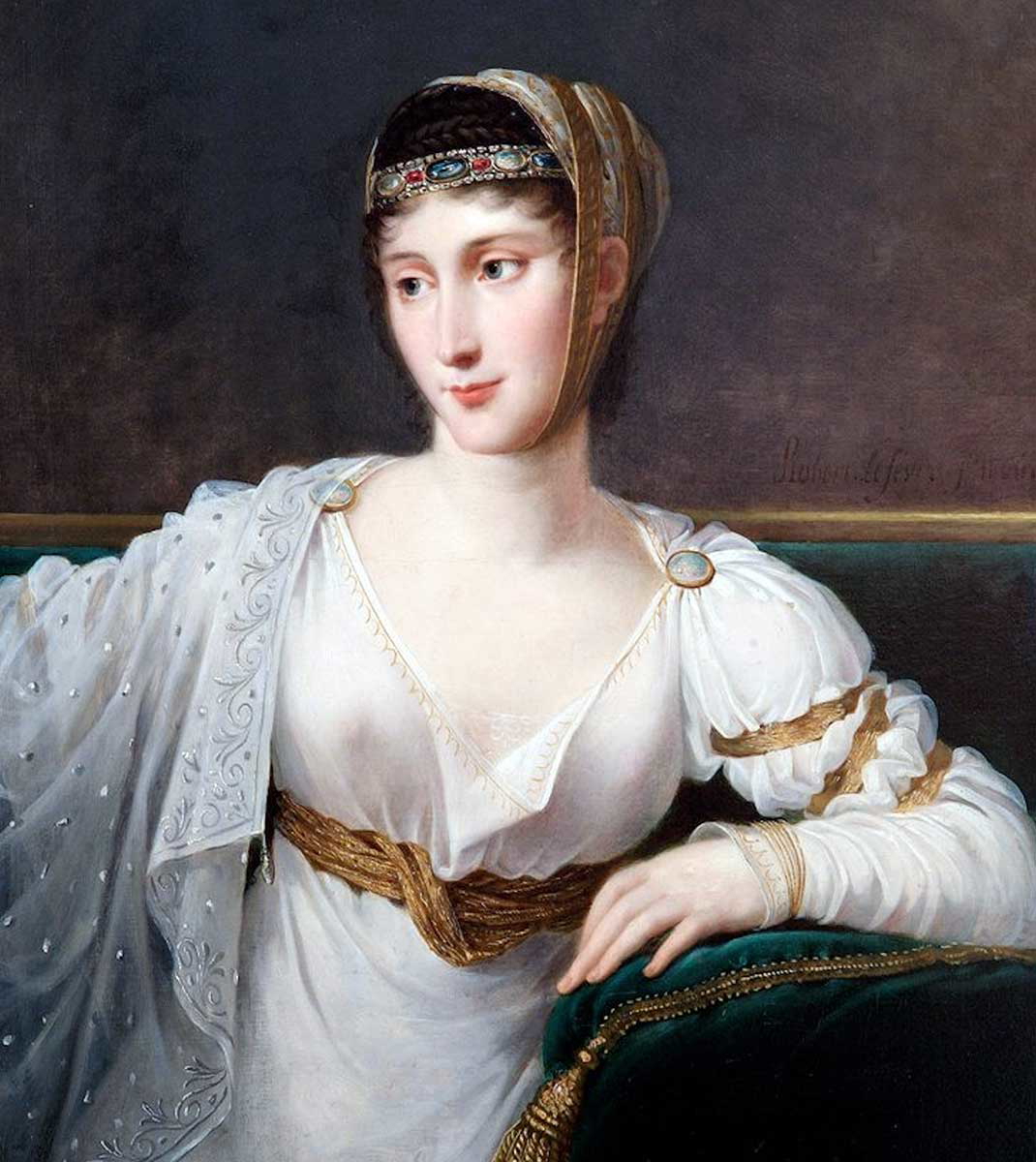
Paula Maria Bonaparte Leclerc Borghese was the sixth child of Letizia Ramolino and Carlo Maria Bonaparte. Her ambitious father served as Corsica’s representative to the court of King Louis XVI of France until his death. After his passing, the family fell into poverty. Letizia could no longer afford to educate the younger daughters, so Pauline received little formal schooling. But that was never a problem—since childhood, she possessed extraordinary beauty, which would become her greatest asset. Clemens von Metternich wrote about her: “Pauline was as handsome as it is possible to be; she was in love with herself, and her only occupation was pleasure.”
Napoleon didn’t know his younger sister for a long time, as he had left for his studies before she was born. When the young Lieutenant Bonaparte returned home on leave, Pauline was already nine years old. Brother and sister immediately took a liking to each other, although it was already clear that Pauline was far from the modest and virtuous ideal of a well-brought-up young lady.
Napoleon quickly realized that he needed to marry off his sister before her scandalous reputation ruined her future. After considering several candidates, he settled on General Charles Leclerc, whom he had known since the Siege of Toulon.

Napoleon sent Leclerc and Pauline to the colony of Saint-Domingue, where Pauline reveled in her near-royal status. She hosted grand balls, lavish receptions, and her famously exclusive “private gatherings.” Rumors swirled about her scandalous behavior, including alleged affairs with low-ranking officers and soldiers. When Leclerc succumbed to yellow fever in November 1802, Pauline mourned him in dramatic fashion—her grief as theatrical as her lifestyle. But by the time she returned to France, her mourning had faded, replaced once again by indulgence and spectacle.
But at that point, her brother had to find her a new husband, and he did—Camillo Borghese, one of the richest men in Italy. He owned a vast art collection in his Villa Borghese in Rome, which inspired him to commission a semi-nude sculpture of his wife from Antonio Canova.
The Naked Princess
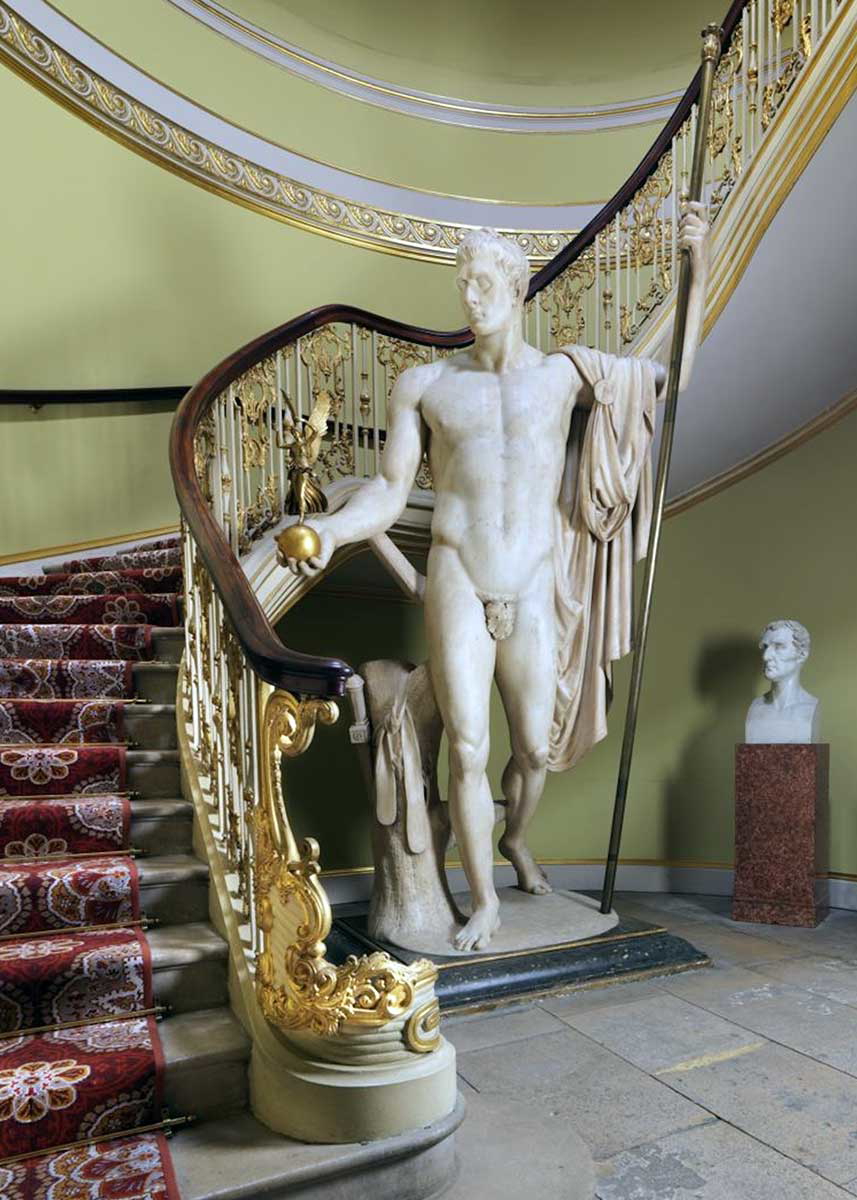
Pauline enjoyed Rome and her almost “Queen of Rome” status. However, she did not enjoy her husband and let everyone know he was impotent. She began to follow her desires again by having affairs.
Her husband still wanted to please her and commissioned a sculpture from Canova, although it was more her idea than his. Canova initially proposed to depict her as Diana, likely to pair it with another semi-nude sculpture of Napoleon himself as Mars the Peacemaker. But Pauline knew who she truly was—the goddess of love and pleasure. So, she chose to be depicted as another Roman goddess. Of course, it was Venus.
While Pauline did not fear for her reputation, even as people began to call her the “Messalina of the Empire,” referring to Messalina, the young wife of Emperor Claudius, who was rumored to have an insatiable sexual appetite and followed her desires without restraint. Canova worried about his own. To depict a semi-nude woman of such status might harm his reputation, so he decided to focus more on mythology to help downplay the political aspect of the statue.
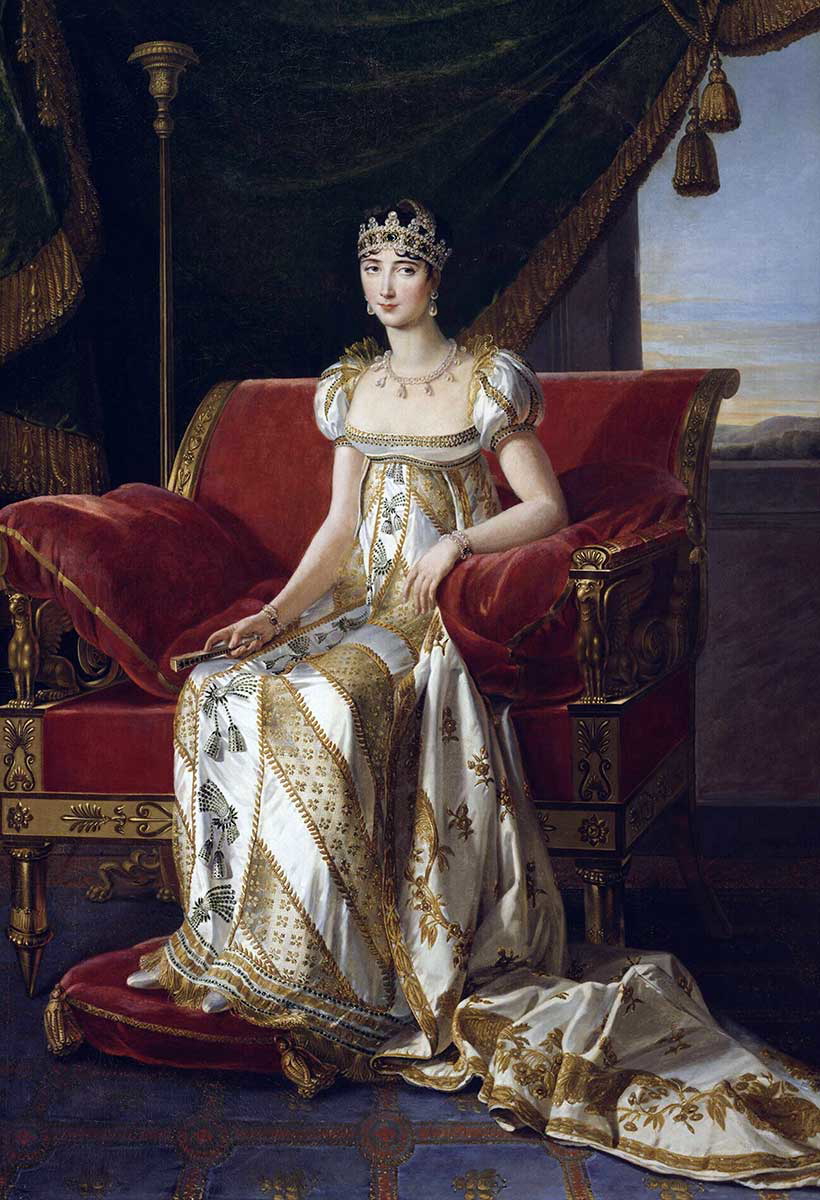
Antonio Canova faced a difficult task: to depict 25-year-old Pauline as soft, sensual, sexual, and goddess-like. To make it lifelike, Canova used live casting, essentially creating a mold of Pauline Borghese’s body. Afterward, he cast a plaster model from this clay version. Rumors circulated that she posed completely naked, and true to her character, Pauline reveled in these whispers, which sparked a scandal even before the statue was completed.
Canova carved Venus Victrix at the height of the neoclassical craze. In the wake of the excavations at Pompeii and Herculaneum, Europe became enthralled with the art and ideals of ancient Greece and Rome. Everyone aspired to be depicted in this fashion—classical, poised, and subtly sensual—and the aesthetic quickly seeped into fashion, architecture, and the decorative arts. Pauline Bonaparte, a recognized trend-setter, was no exception: she favored sheer, flowing gowns and coiffed her hair like a Greco-Roman goddess. Canova’s marble immortalizes precisely that image.
Carved in Eternity
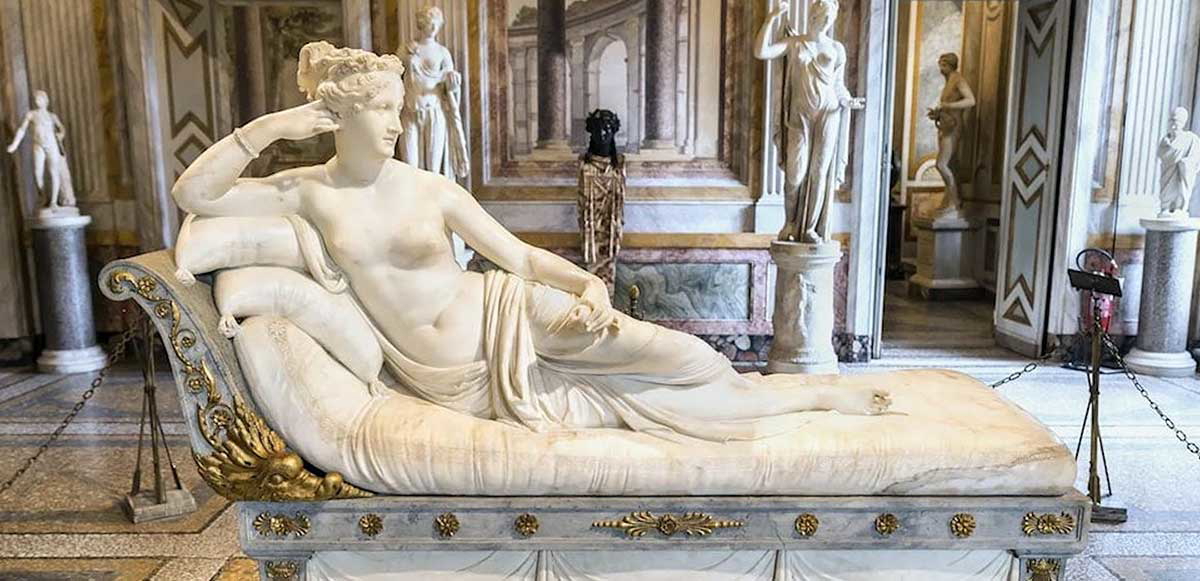
The guests gathered around the heavy curtains, behind which the infamous statue of Princess Pauline bathed in candlelight. Her husband drew them open, revealing a marble goddess reclining on a couch.
Her marble skin glowed because it was rubbed with beeswax, her body shamelessly turning around, since the whole sculpture was placed on a rotating stand so everyone could admire her. Pauline hoped to impress, shock, and make people talk about her, and she easily achieved her objective.
It was a private showing—only selected viewers had the chance to see Canova’s masterpiece. And there was truly something to see.
Pauline is depicted as Venus triumphant in the Judgment of Paris, holding the apple awarded to “the fairest of them all.” All her body parts are slim, elongated, and sensual—neck, fingers, torso, even toes. She raises her head in a kind of surprise, as interpreted by some. Her hair is gathered into Psyche knot, revealing her long, slender neck and adding a touch of sensuality to the sculpture. The cloak delicately covered her hips, hiding enough but not all, allowing the viewer to use their imagination. She is reclining on a catafalque with rich drapery, evoking a sense of immortality—like the statues often seen on sarcophagus lids of Etruscans.
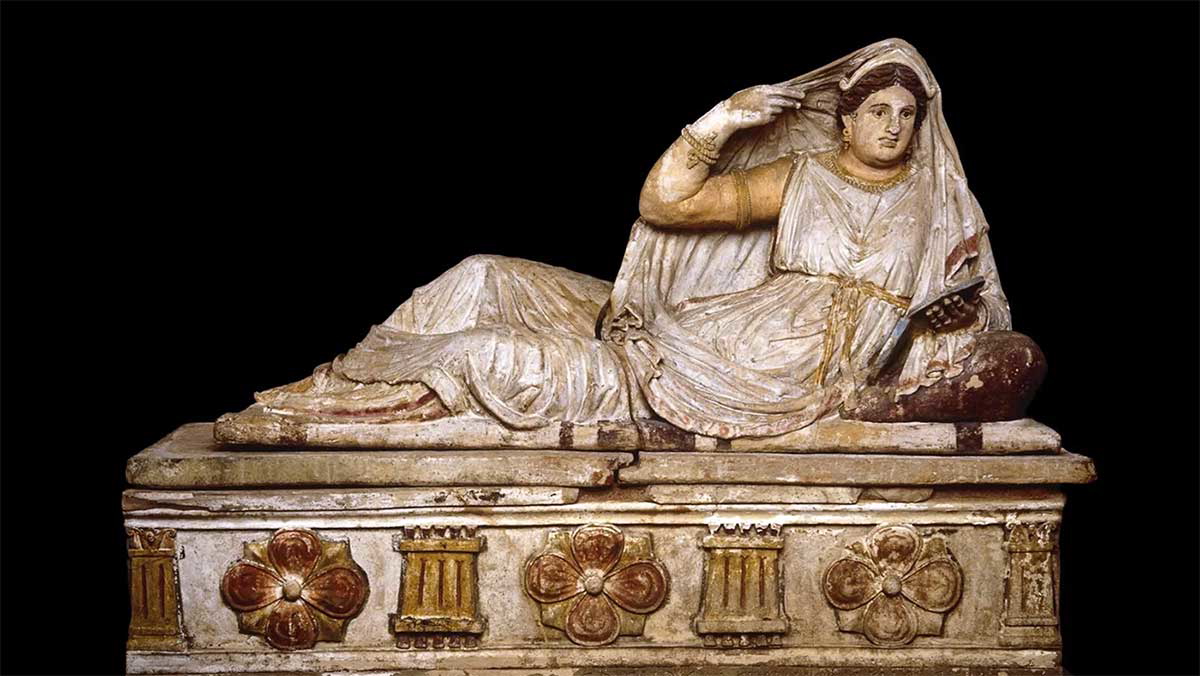
For a closer look, Canova’s Venus evokes the Venus of Urbino by Titian. This oil painting, completed in 1538 by the Venetian Renaissance master, is considered one of the classic masterpieces. It is probable that Canova was inspired by Titian. He aimed to create a timeless masterpiece and sought to have his name associated with the great Renaissance masters.
Both Venuses are portrayed reclining in an erotic pose, exuding an unashamed confidence in their bodies. While Pauline holds an apple, the Venus of Urbino cradles flowers. Both figures gaze forward, inviting viewers to appreciate their forms. Interestingly, it is believed that this painting was commissioned by Guidobaldo, possibly to celebrate his marriage in 1534 to Giulia Varano. Canova positioned his model on the couch in a manner reminiscent of the Venus of Urbino, allowing the viewer to experience a duality: on one hand, she embodies the goddess, and on the other, she is a real woman made of flesh and blood.
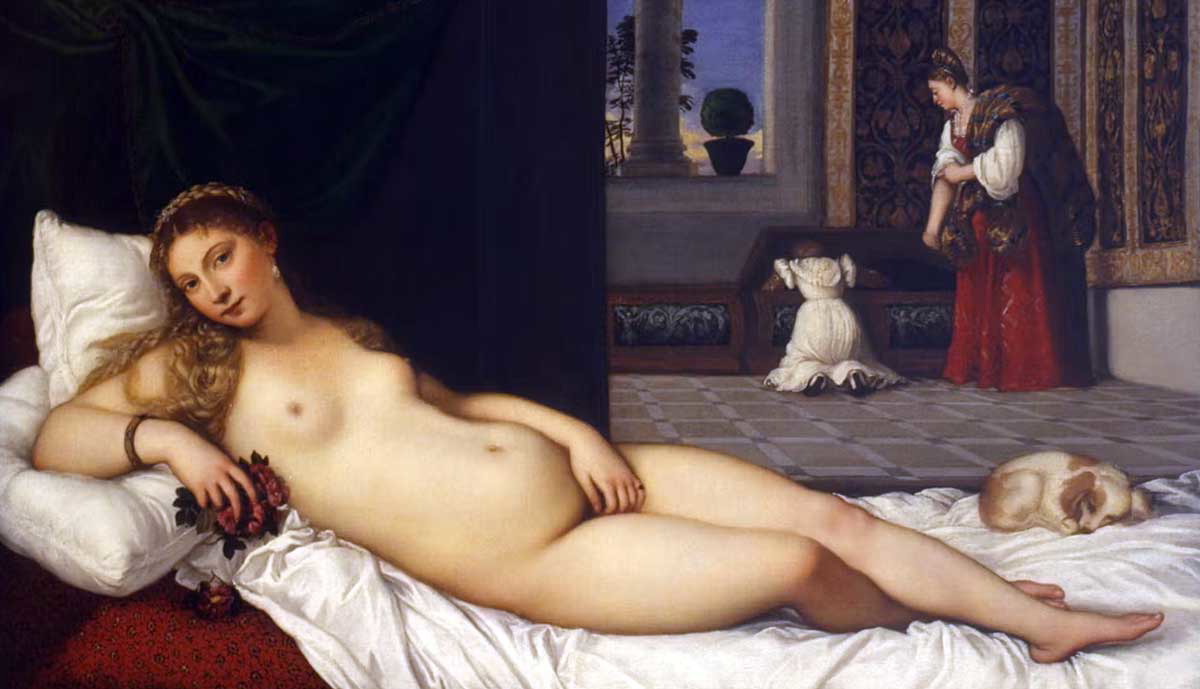
Pauline Bonaparte got what she wanted—her daring statue became the talk of Europe. For a few years in a row, people gathered just to see the shimmering, moving statue barely illuminated behind the curtains.
But soon, their lives would change dramatically, as well as the life of the statue, which would switch locations several times before finally settling in.
Pauline’s health had been in steady decline since the death of her only son in 1804, prompting her to travel to various spas in search of relief. In 1814, Napoleon’s downfall led to his exile in Elba, marking the collapse of her life as an imperial princess. Pauline sold her assets and moved to Elba to join her brother until his opportunistic escape and return to France in February 1815. Meanwhile, her husband revealed a longstanding affair and chose to live separately from her. After ten long years, the couple were briefly united for three months before Pauline passed away from cancer in 1825.
As for Venus Victrix, she was transferred to Camillo’s residence in Turin, then later moved to Genoa. She returned to Rome in 1838, where she can still be admired by visitors in the halls of the Galleria Borghese.









